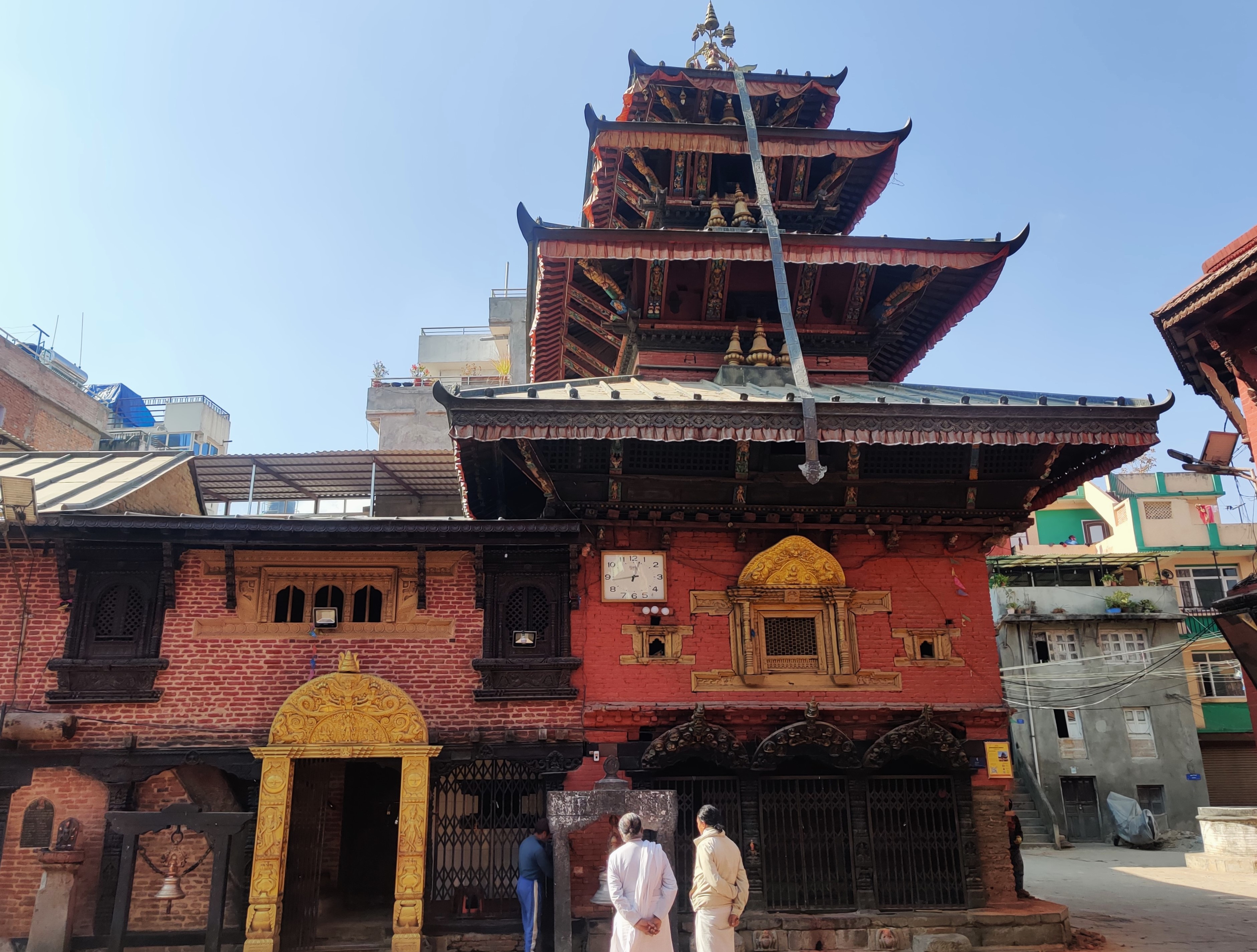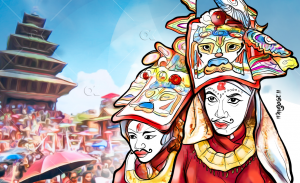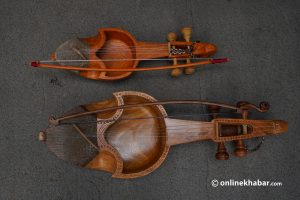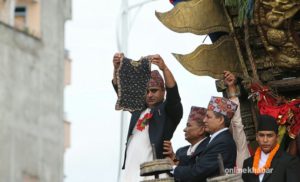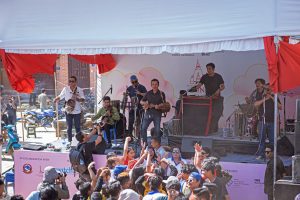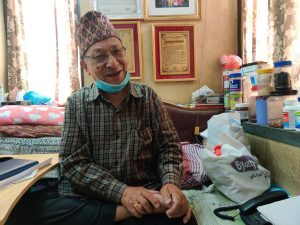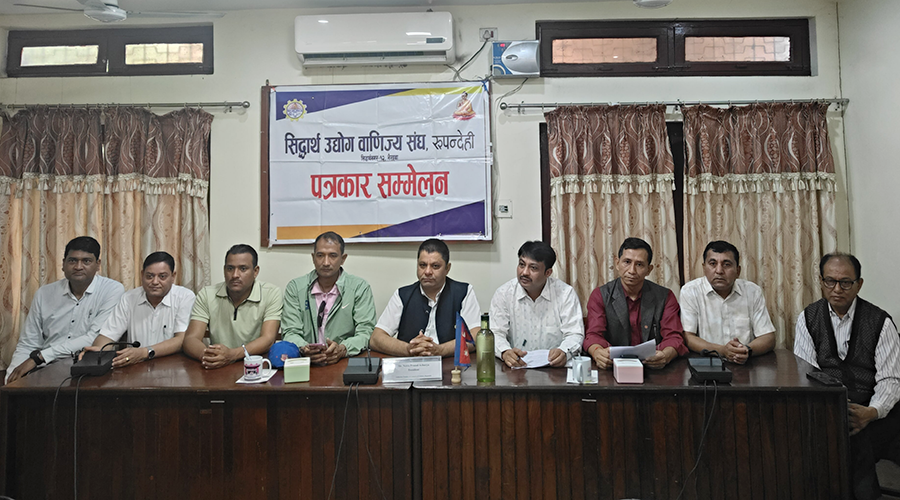There was a Manandhar family from Thahiti, Kathmandu that used to organise a traditional musical instrumental competition ‘Bhajubir Sirpa’ at its own expense annually. Musicians participated in the competition playing instruments like dhime, ta and khin among others.
About 20 years ago, they held an edition of the programme in July. Personal invitations were sent to the notable musicians and teachers of the community. Many even expressed their commitment to participate.
But, one person strongly disagreed.
He said according to the cultural norms, the deity of instrumental music, Natyeshwar Bhagawan, rests during this time, and that they are not allowed to play the instruments from Sithi Nakha to Gathemangal. Following his objection, the competition was postponed till after Gathemangal. And thereafter, the word spread in the community that the instrument should not be played at this time.
Currently, the tradition of not playing the instrument is not as strict as it was in the past. However, traditional music teachers and some artists still do not favour playing musical instruments (baajan) at this time. Others rest during the rainy season for safety reasons.
And not many know about the culture that they are not supposed to play the instruments for about seven weeks starting from Sithi Nakha. Local musicians and cultural experts say there are various reasons behind this.
An array of arguments
Khin is one of the traditional instruments of Kathmandu that is very complex in nature and can only be played by a veteran player. Instrumentalist Triratna Manandhar says, “Even if one is a pro in playing any instrument, khin is not played during this time. It is often only played by instrumentalists and musicians who have practised music for a long time. And, they follow it strictly as they are familiar with the cultural norms.”
According to Indra Maharjan, a traditional music teacher from Kilagal Tole, the culture suggests only flute and dholak are played during this time. Khau or khari are banned in this season because the rain has an impact on its tune. Both Manandhar and Maharjan say that this culture is also a nod to the importance of agriculture in the community.
Instrumentalist Maharjan explains there were two reasons why people stopped playing at this time. First of all, this is the farming season. The rainy season begins in Kathmandu from Sithi Nakha and the farming season begins. This culture, he says, may have been developed to draw the attention of the people of Kathmandu, who always enjoy festivals and musical instruments, to agriculture.
Another reason is the safety of the instrument, say Manandhar and Maharjan. As it is always raining in this season, the instrument can get wet and damaged.
The musicians consider Naasa Dya (Natyeshwar) as their main teacher. It is believed that because his blessings fill them with the art of instrumental music, the god should be made happy.
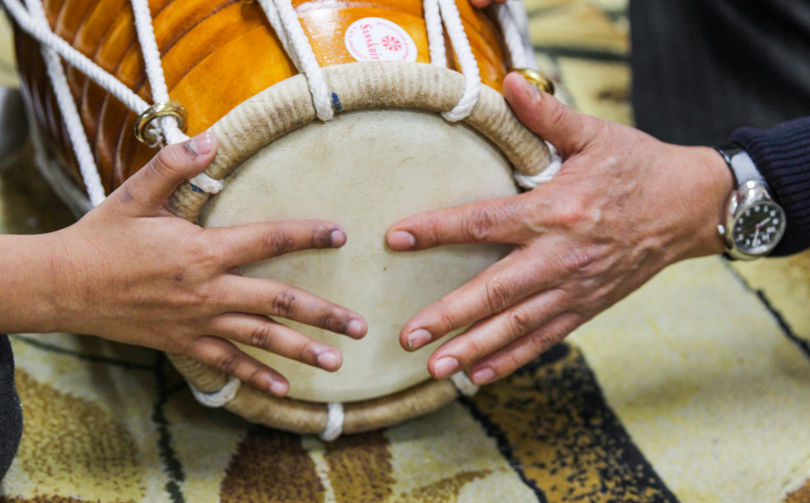
According to the tradition, on the day of Sithi Nakha, the musicians play the tune ‘Dyo Lhyau’ in honour of the deity. Then the musical instruments are played. But, since Natyeshwar also rests from Sithi Nakha to Gathemangal, there is a religious belief that one should not play or touch the baajan during this time. During this time, jatras (festivals) are not celebrated.
Impact on other rituals
Other rituals that must be performed at this time also seem to be influenced by agriculture. At this time, there are no feasts or festivals in the Kathmandu valley. Apart from daily rituals, no religious works and cultural festivals are performed till Sithi Nakha.
One of the obligatory deeds is the tradition of performing funeral rites. Some 25 years ago today, if a person died in a house between Sithi Nakha and Gathemangal, it is customary for the deceased’s chest to be covered with a traditional cloth and a traditional umbrella used during farming, or Sinaa jya kusaa, says Tina Manandhar, an associate professor at the Central Department of Nepali History, Culture and Archaeology in Tribhuvan University.
Earlier, that ensemble was mandatory at funerals during this time. The customs confirm the premise agriculture was the primary basis of the culture then, says Manandhar.
Slightly different culture in Lalitpur
Indra Maharjan says the people of Lalitpur also do not play any instrument around this time. In Lalitpur, if the situation was normal, it would have been time for Rato Machhindranath’s rath yatra. Sometimes, the festival lasts only until the end of June whereas other times it can go as long as up to Dashain (October), depending on the right planatory positions.
Furthermore, the Rato Machhindranath festival does not follow the same ritual as other communities and festivals. How long the instruments are played is decided based on how long the Rato Machhindranath’s rath yatra lasts. If the stars are not aligned right, the Rato Machhindranath idol will not reach Bungmati even till the Nepali month of Shrawan (mid-August).
So, if the idol is taken to Bungamati before Gathemangal, the baajan will be stopped as suggested by the ritual discussed above. Otherwise, it is customary to play the instruments, solely for the festival, says Chandra Maharjan, the president of Jyapu Samaj.







